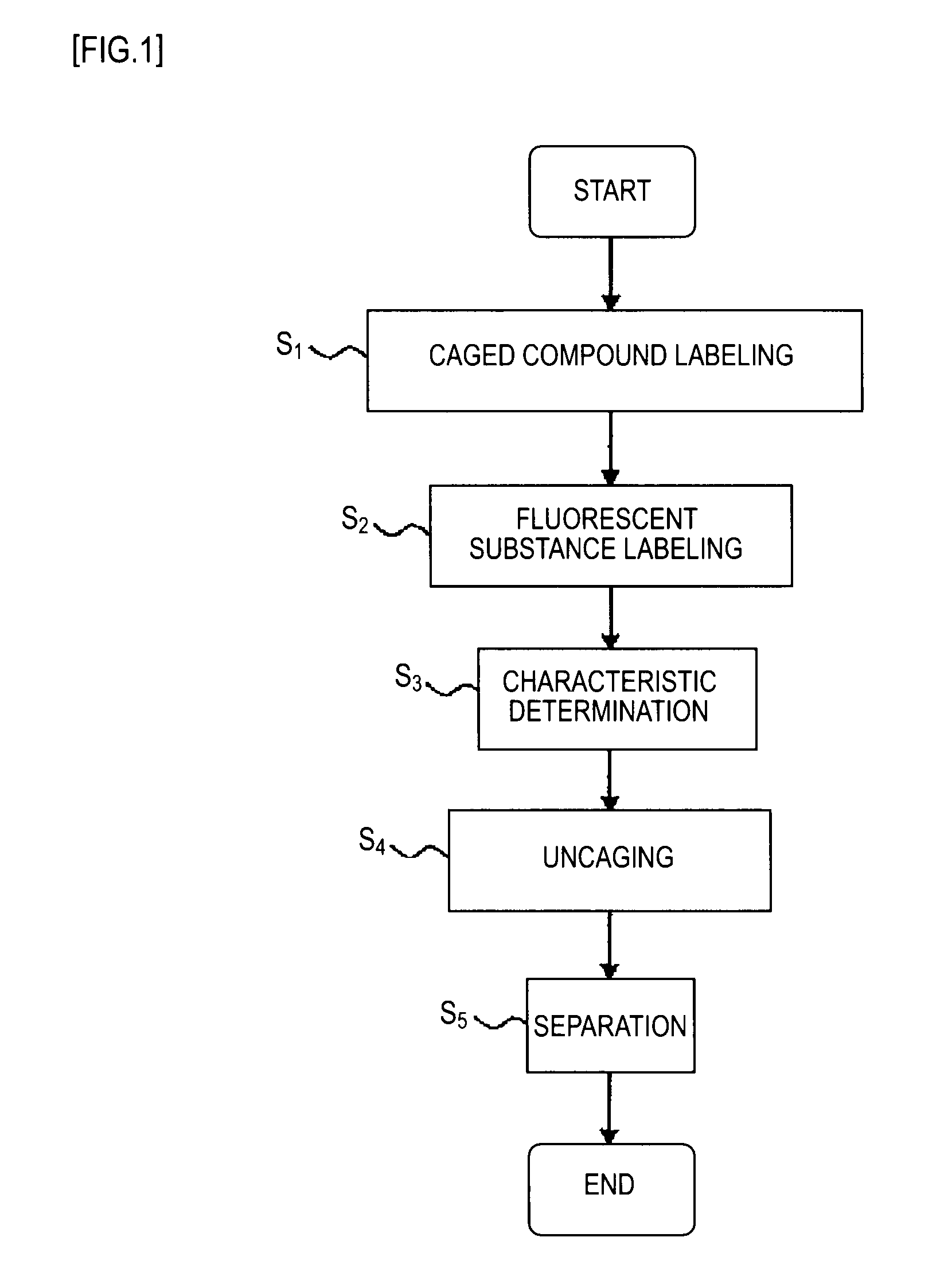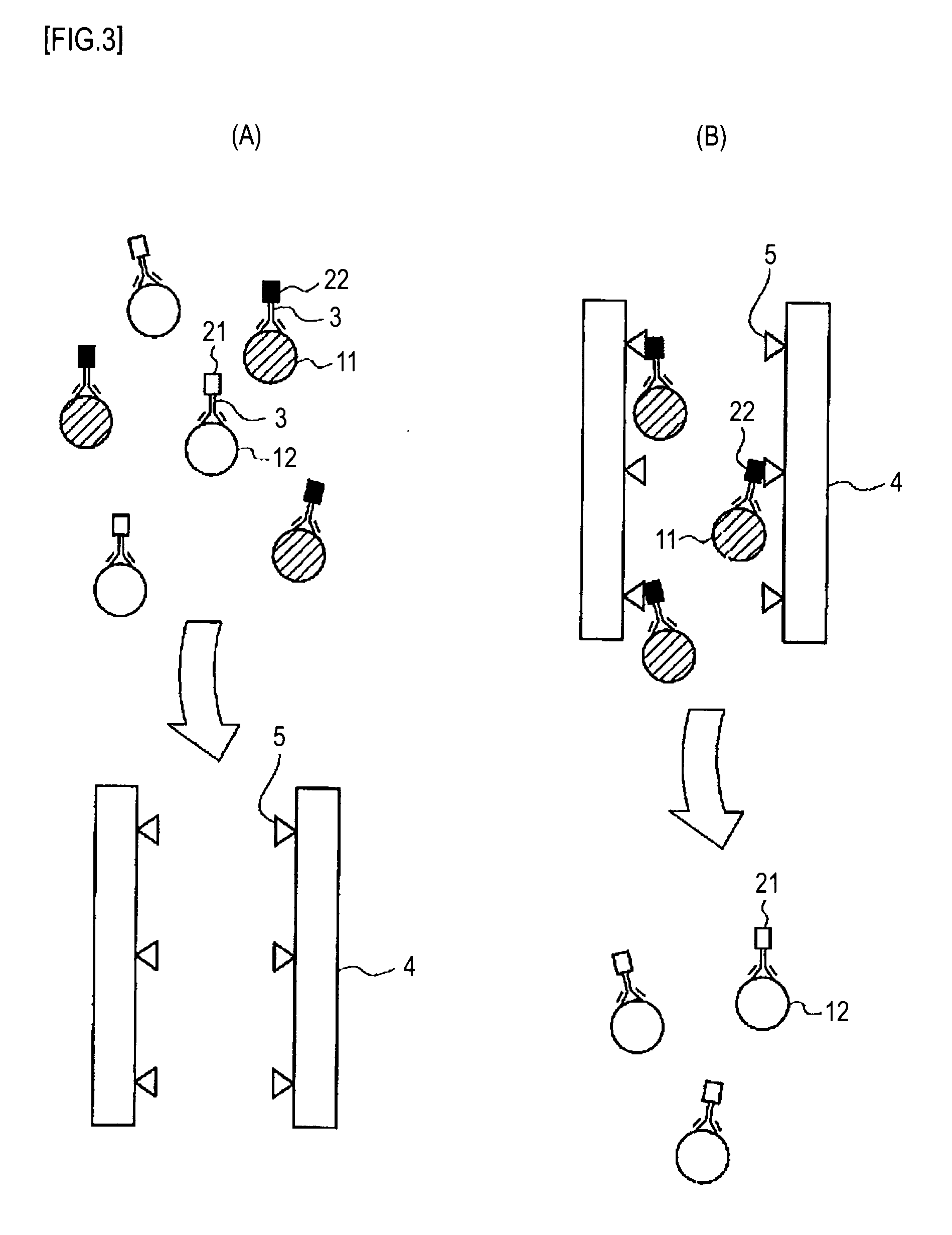Cell separating method
a cell and cell technology, applied in the field of cell separating method, can solve the problems of complex structure of fluid system and facs sorting system, inability to separate cells, etc., and achieve the effect of suppressing the physical damage to cells
- Summary
- Abstract
- Description
- Claims
- Application Information
AI Technical Summary
Benefits of technology
Problems solved by technology
Method used
Image
Examples
Embodiment Construction
[0027]Hereinafter, preferable embodiments of the invention will be described with reference to drawings. Although the embodiments described as follows illustrate an example of representative embodiments of the invention, the scope of the invention is not narrowly interpreted by the embodiments. The description will be made in the following order.
1. Cell Separation Using Caged Biotin
[0028](1) Caged compound labeling (step S1)
[0029](2) Fluorescent substance labeling (step S2) and characteristic determination (step S3)
[0030](3) Uncaging (step S4)
[0031](4) Separation (step S5)
2. Cell Separation Using Caged Fluorescein
[0032](1) Caged compound labeling (step S1)
[0033](2) Fluorescent substance labeling (step S2) and characteristic determination (step S3)
[0034](3) Uncaging (step S4)
[0035](4) Separation (step S5)
1. Cell Separation Using Caged Biotin
[0036]FIG. 1 is the flowchart illustrating the sequence of the cell separating method according to the invention. FIGS. 2 and 3 are schematic vie...
PUM
 Login to View More
Login to View More Abstract
Description
Claims
Application Information
 Login to View More
Login to View More - R&D
- Intellectual Property
- Life Sciences
- Materials
- Tech Scout
- Unparalleled Data Quality
- Higher Quality Content
- 60% Fewer Hallucinations
Browse by: Latest US Patents, China's latest patents, Technical Efficacy Thesaurus, Application Domain, Technology Topic, Popular Technical Reports.
© 2025 PatSnap. All rights reserved.Legal|Privacy policy|Modern Slavery Act Transparency Statement|Sitemap|About US| Contact US: help@patsnap.com



